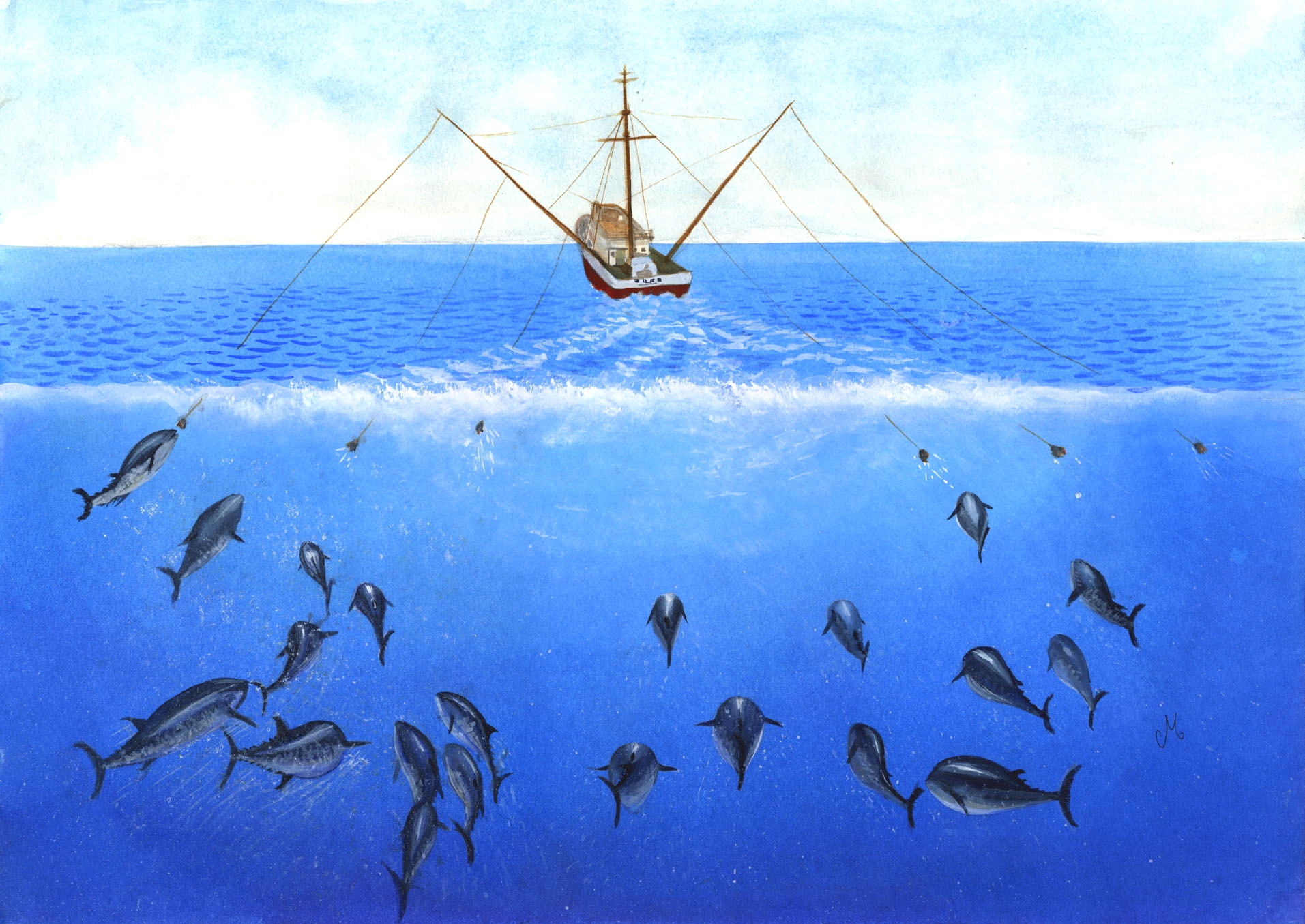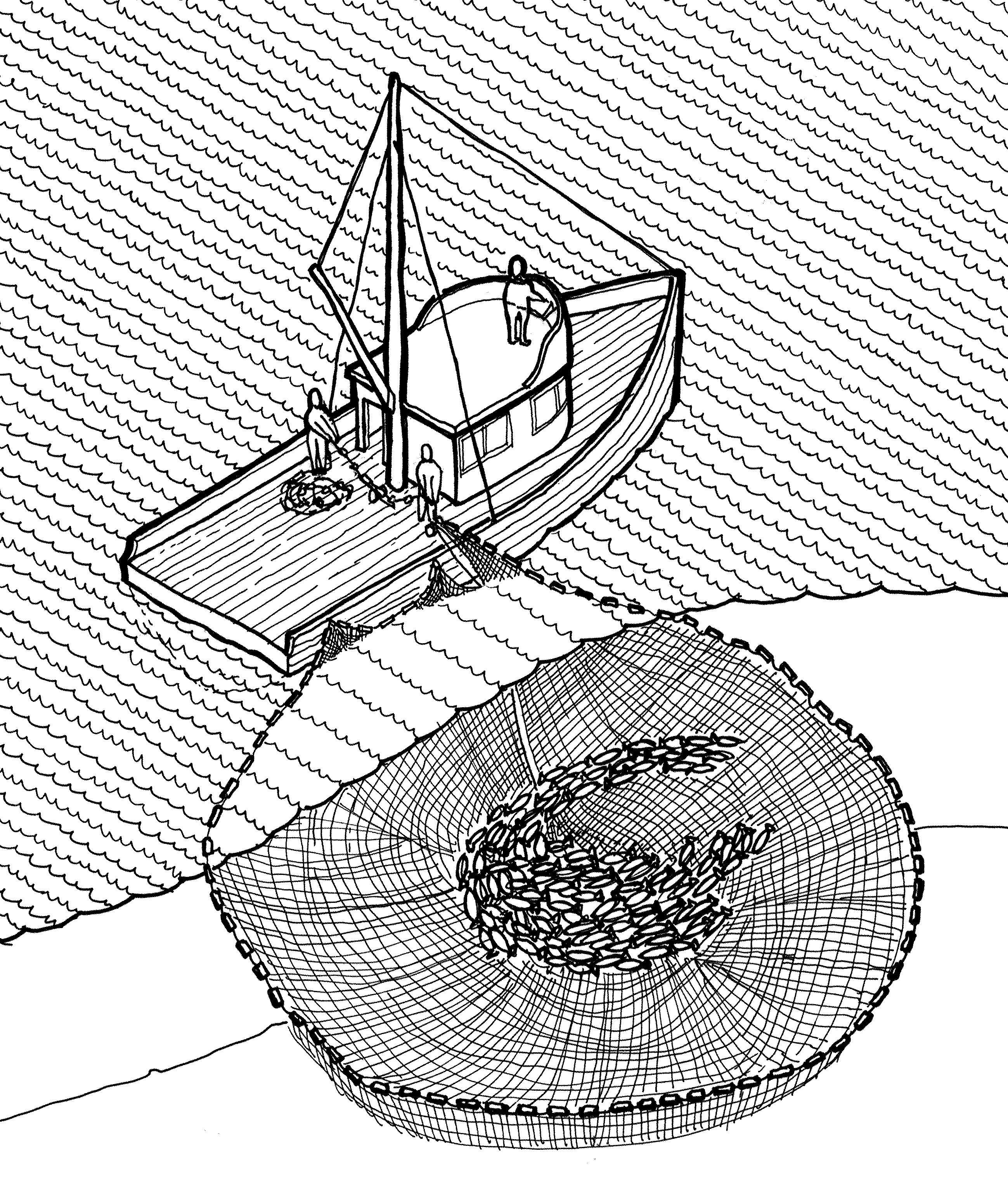How machine learning reveals the true costs of high-seas fishing
Before now this unsustainable and unprofitable practice has been too big to measure
The majority of our planet is covered by oceans—which are a very important resource, providing both people and animals energy, medicine, and food. But as the human population continues to grow, we have been relying more and more heavily on these marine resources. Technological advances have allowed humans to reach farther and deeper into the oceans, routinely fishing away from shore in international areas known as the high seas.
While fishing in the high seas has increased, we still don't have any way to accurately track global fishing practices—knowing who is catching what, where they are catching it, and how they are catching it. Of course, lack of a governing body makes the management of international waters tricky, but part of the problem is simply scale. The ocean is huge and it is nearly impossible to patrol everywhere or monitor how individual boats behave at all times. But we cannot adequately manage marine resources to ensure that they will be around for future generations without understanding the sum total of how many fish are being caught and where they're coming from.

Trolling for tuna
NOAA, Wikimedia Commons
Luckily, a team of scientists recently found a way to more accurately track global fishing habits. Most ships are required to have an automatic identification system (AIS), which routinely broadcasts a vessel’s identity, location, speed, and heading (their direction of travel) to avoid collisions at sea. Using the data stored from the AIS transmissions, the team of researchers were able to find and track the movement of fishing vessels on the high seas.
While this sounds straight-forward, it's by no means a simple task. The scientists had to process 22 billion position signals sent out between 2012 and 2016. The team trained computers to help, using two convolutional neural networks (CNNs)—a type of artificial network that can be used to analyze visual imagery—in order to identify different types of vessels. (Without the CNNs help, it would have taken one person, working full time, almost 100 years to complete this task!) The computers learned to distinguish fishing vessels from non-fishing vessels by using the ships’ movement tracks. A cargo ship, for example, will move straight from port to port at a relatively good pace. Fishing vessels, on the other hand, show distinctive tracks that allow scientists to identify and differentiate them.

An illustration of the purse seine fishing technique
Library of Congress, Wikimedia Commons
“Purse seiners, for instance, do a large loop to encircle schooling tuna, while drifting longliners move in a ‘zig-zag’ like manner when they set and retrieve their gear,” explains Juan Mayorga, one of the co-authors of the experiment, and a scientist working with the Sustainable Fisheries Group at University of California Santa Barbara. The team compiled a large reference library of different vehicle movement tracks, and then trained the CNNs to recognize the general patterns. Once programmed, the CNNs could not only identify fishing boats but even differentiate between different types of fishing method (i.e. trawling, long-lining, or purse-seining). The CNNs could also predict the size, weight, and engine power of the ship with more than 90 percent accuracy.
By better understanding what kinds of boats are working where, the scientists developed some interesting—albeit terrifying—conclusions. They found that humans are actively fishing over half of the ocean (about 55 percent). In fact, we fish so much that if you were to combine all of the distances traveled by fishing boats over the course of a year, you would be able to travel to the moon and back over 600 times! This figure is particularly astounding when comparing our fishing practices to global agricultural practices. Only around 34 percent of land is used for agriculture—and, because there's so much less land than water, that equates to only about 50 million square kilometers used for agriculture. In contrast, more than 200 million square kilometers is fished. Even though fishing produces little more than 1 percent of the total calories consumed by mankind, it takes up more than 4 times as much space as agriculture does!

An industrial seine captures about 400 tons of Chilean jack mackerel
C. Ortiz Rojas, Wikimedia Commons
Furthermore, fishing practices seem to be more responsive to cultural and political influences than they do to environmental variability. Even though fish respond to weather, seasons, and changes in climate (just like crops do on land), fishing vessels do not seem to change their practices to account for fish behavior. Instead, fishing practices fluctuated the most based on holidays and weekends. In the Northern Hemisphere, for example, there were noticeable breaks in fishing around weekends and Christmas, but the largest drops in fishing activity were seen during the Chinese New Year—and fishing closures mandated by the Chinese government. The ocean is a part of nature, and as such, abides by its own rules. Yet this research shows that people are fishing like marine life is a human-controlled industry. If we do not shift fishing practices to account for availability or location of certain resources, we cannot expect to continue to harvest at current rates.
The scientists also found that fishing the high seas is just not economically profitable. When comparing the catch revenue to the cost of high seas operations (i.e. the cost of fuel and labor), they found that 54 percent of high-seas fishing areas are not profitable to fish at the current exploitation rates. Many governments provide subsidies to cushion these costs, globally accounting for around $4.2 billion a year—but even with these large subsidies, 19 percent of high-seas fishing grounds still appear to be unprofitable. Of course, some fishing methods, like longlining and purse seining, are more profitable than others. But trawling proved to be remarkably unprofitable, with as much as 32 percent of trawling operations appearing unprofitable even after receiving government subsidies. Even in countries with low wages, governments have to pump in an astounding amount of money to keep high-seas fishing operations profitable. (The researchers do note that there could be unreported catches that help to increase profits.) But even so, it is apparent that fishing at our current rates is a losing game, unsustainable for both the environment and the economy in the long run.
Being able to quantify not only fishing rates but profit margins, this research uncovers some important, alarming information. Because it is so difficult to patrol the ocean, we haven't really previously understood how we harvest marine resources on a global scale. Now, with the help of the trained CNNs, it is much easier to track and analyze fishing practices in international waters. Although it's astounding to think that over half of our oceans are actively fished, this information can allow scientists and law-makers to better monitor those areas and resources.
The good news is that fishing practices can be made more sustainable. “We need transparency to sustainably manage global fisheries,” Mayorga says, “We can’t manage what we can’t see.” By using methods like computer learning and collecting large sums of data, fishing practices can be made more transparent, allowing for more realistic monitoring and effective fisheries regulations.
These researchers are working to improve this transparency and have even made their tracking data available for anyone to use. You can now track global fishing practices in real time, using the new Global Fishing Watch interactive map. But, as Mayorga points out, there's still a need to find better ways to incentivize fishing industries to manage resources. Continued government subsidies allow unprofitable businesses to continue, risking both economic and ecological damage in the long term. If instead we move towards an incentives-based industry—where, for instance, informed consumers are willing to pay a little bit more money for sustainably harvested fish—we can build stewardship that encourages the long-term protection of these marine resources we so heavily rely upon.